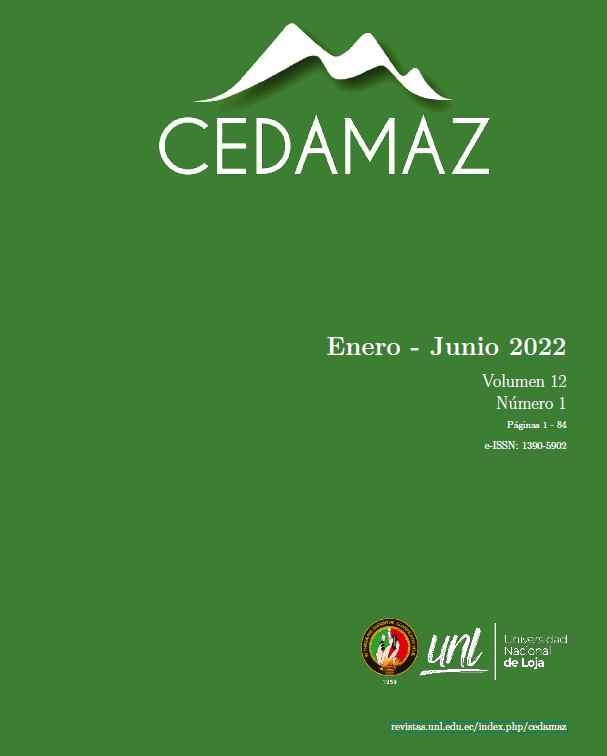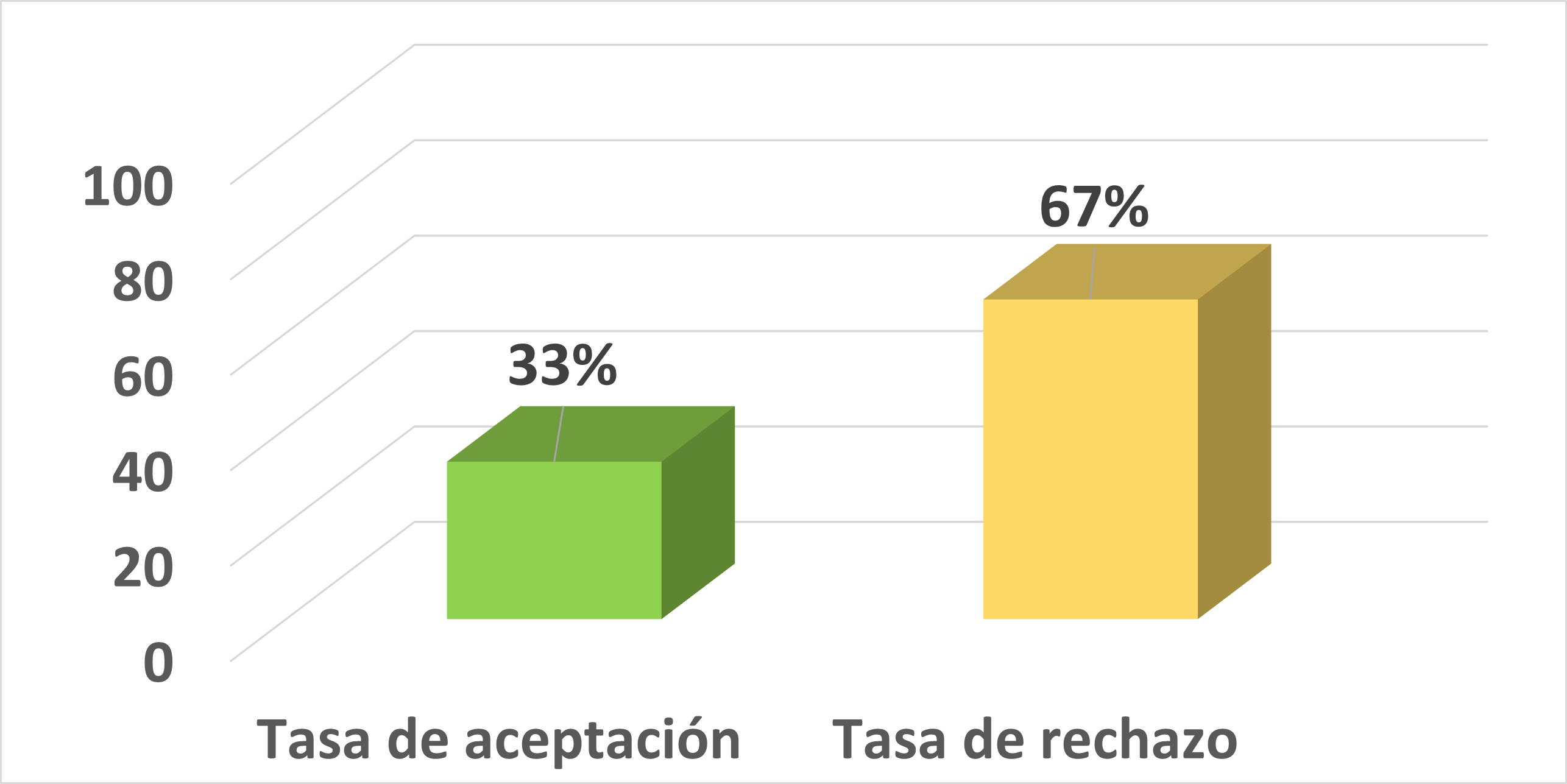El Parque Universitario Francisco Vivar Castro: Un refugio clave para las aves de la Hoya de Loja, Ecuador.
Aves del PUEAR Loja, Ecuador.
DOI:
https://doi.org/10.54753/cedamaz.v12i1.1274Palabras clave:
Aves, Andes, Áreas protegidas, Loja, EcuadorResumen
Los Andes del sur de Ecuador constituyen una región privilegiada en lo que a biodiversidad se refiere. Sin embargo, el impacto humano sobre los ecosistemas naturales de esta zona ha sido significativo, de ahí que esfuerzos de creación de áreas protegidas dentro de este territorio se constituyan en procesos valiosos para la conservación de la biodiversidad. El Parque Universitario de Educación Ambiental y Recreación Francisco Vivar Castro (PUEAR) es un área protegida ubicada en el perímetro sureste de la ciudad de Loja, el entorno urbano de mayor crecimiento en los Andes más australes del país. Este sector se constituye en un sitio de relevante importancia para la conservación de la avifauna local y regional. Sin embargo, a pesar de su relevancia, esta área protegida carecía de un análisis detallado de la comunidad de aves que alberga. Con base en el análisis de publicaciones previas y la sistematización de registros visuales y auditivos del sitio en la última década, se consolidó un listado actualizado de la avifauna de esta área. El PUEAR alberga al menos 112 especies de aves, la tercera parte (32%) se consideran raras; da refugio a tres especies amenazadas en Ecuador (Penelope barbata, Leptosittaca branickii y Agriornis albicauda); el 9% de las especies del sitio se consideran endémicas; el 5% posee sensibilidad alta a la intervención antrópica; y se evidencia la visita de cinco especies migratorias. Estos resultados denotan la importancia de esta área protegida como escenario local para futuros procesos de investigación, restauración y planificación territorial en la Hoya de Loja.Métricas
Citas
Aguirre-Mendoza, Z., Gutiérrez, R., Gaona, O., Jaramillo, D. (2017). Escenarios para la enseñanza y valoración de la biodiversidad en la región sur del Ecuador. Bosques Latitud Cero, 6(1), 73–87.
Aguirre-Padilla, N., Gaona, T., Samaniego, C. (2019). Valoración ecológica y económica del Parque Universitario Francisco Vivar Castro, Loja, Ecuador. Arnaldoa, 26(1).
Andrade, P. (2009). Aves urbanas de los parques, jardines y alrededores de la ciudad de Loja. Fundación Socio-cultural Don Bosco, Operadora de Turismo Aratinga Aventuras. Loja, Ecuador.
Astudillo, P., Tinoco, B., Siddons, D. (2015). The avifauna of Cajas National Park and Mazán Reserve, southern Ecuador, with notes on new records. Cotinga, 37, 1–15.
Banville, M. J., Bateman, H. L., Earl, S. R., Warren, P. S. (2017). Decadal declines in bird abundance and diversity in urban riparian zones. Landscape and Urban Planning, 159, 48–61.
Bax, V., Francesconi, W. (2019). Conservation gaps and priorities in the Tropical Andes biodiversity hotspot: Implications for the expansion of protected areas. Journal of Environmental Management, 232, 387–396.
Beaugeard, E., Brischoux, F., Henry, P.-Y., Parenteau, C., Trouvé, C., Angelier, F. (2019). Does urbanization cause stress in wild birds during development? Insights from feather corticosterone levels in juvenile house sparrows (Passer domesticus ). Ecology and Evolution, 9(1), 640–652.
Benítez, Á., Cruz, D., Vega, M., González, L., Jaramillo, N., López, F., Aguirre, Z. (2021). Briófitos y hongos (liquenizados y no liquenizados) del Parque Universitario Francisco Vivar Castro, Loja, Ecuador. Bosques Latitud Cero, 11(2), 1–18.
Billerman, S. M., Keeney, B. K., Rodewald, P. G., Schulenberg, T. S. (2020). Handbook of the Birds of the World Alive (S. M. Billerman, B. K. Keeney, P. G. Rodewald, T. S. Schulenberg (eds.)). Cornell Laboratory of Ornithology.
BirdLife International. (2021a). Endemic Bird Areas factsheet: Central Andean páramo.
BirdLife International. (2021b). Endemic Bird Areas factsheet: Southern Central Andes.
Chininin, E. (2017). Análisis de la diversidad de avifauna asociada a un sistema agroforestal de café en la microcuenca El Cristal, parroquia Malacatos, Loja.
Cincotta, R. P., Wisnewski, J., Engelman, R. (2000). Human population in the biodiversity hotspots. Nature, 404(6781), 990–992.
Cisneros-Heredia, D. F., Amigo, X., Arias, D., Arteaga, J., Bedoya, J., Espinosa F., S., Montenegro, E., Nazati, G., Carrión, J. M. (2015). Reporte del 1er Conteo Navideño de Aves de Quito, Ecuador. ACI Avances En Ciencias e Ingenierías, 7(2). https://doi.org/10.18272/aci.v7i2.256
Correa-Conde, J. (2004). Influencia de las aves dispersoras de semillas, en la recuperación de la vegetación en una área quemada del PUEAR. (Tesis de Pregrado) Carrera de Ingeniería Forestal, Universidad Nacional de Loja.
Correa-Conde, J., Ordóñez-Delgado, L. (2007). El Sur Tiene Alas: Guía de Aviturismo de las provincias de Loja y Zamora Chinchipe. Ministerio de Turismo, Fundación Ecológica Arcoiris, The Nature Conservancy.
Cruz-Angon, A., Greenberg, R. (2005). Are epiphytes important for birds in coffee plantations? An experimental assessment. Journal of Applied Ecology, 42(1), 150–159.
Dinerstein, E., Olson, D. M., Graham, D. J., Webster, A. L., Primm, S. A., Bookbinder, M. P., Ledec, G. (1995). A Conservation Assessment of the Terrestrial Ecoregions of Latin America and the Caribbean (E. Dinerstein, D. M. Olson, D. J. Graham, A. L. Webster, S. A. Primm, M. P. Bookbinder, G. Ledec (eds.)). The World Bank.
Escobar-Ibáñez, J. F., MacGregor-Fors, I. (2017). What’s New? An Updated Review of Avian Ecology in Urban Latin America. In Avian Ecology in Latin American Cityscapes (pp. 11–31). Springer International Publishing.
Freile, J. F., Restall, R. (2018). Birds of Ecuador. Helm Field Guides.
Freile, J. F., Santander, T., Carrasco, L., Cisneros-Heredia, D. F., Guevara, E., Sánchez-Nivicela, M., Tinoco, B. (2019). Lista roja de las aves del Ecuador continental. Ministerio del Ambiente, Aves y Conservación, Comité Ecuatoriano de Registros Ornitológicos, Universidad del Azuay, Red Aves Ecuador y Universidad San Francisco de Quito. Harvey, J. A., Chernicky, K., Simons, S. R., Verrett, T. B., Chaves, J. A., Knutie, S. A. (2021). Urban living influences the nesting success of Darwin’s finches in the Galápagos Islands. Ecology and Evolution, 11(10), 5038–5048.
Iñiguez-Armijos, C., Rausche, S., Cueva, A., Sánchez-Rodríguez, A., Espinosa, C., Breuer, L. (2016). Shifts in leaf litter breakdown along a forest–pasture–urban gradient in Andean streams. Ecology and Evolution, 6(14), 4849–4865.
IUCN. (2021). The IUCN Red List of Threatened Species. Version 2021-3.
Jácome- Negrete, I. V., Trujillo Regalado, S. I., Rocha Cuascota, D. L., Hidalgo Cárdenas, E. A., Flores Vega, S. C. (2019). Riqueza y abundancia de las aves urbanas de nueve áreas verdes de la ciudad de Sangolquí (Ecuador): Estudio preliminar. Siembra, 6(1), 001–014.
Lee, M. B., Rotenberry, J. T. (2015). Effects of land use on riparian birds in a semiarid region. Journal of Arid Environments, 119, 61–69.
Luck, G. W. (2007). A review of the relationships between human population density and biodiversity. Biological Reviews, 82(4), 607–645.
Moore, J. V., Krabbe, N., Jahn, O. (2013). Bird sounds of Ecuador, a comprehensive collection. [MP3 DVD]. John V. Moore Nature Recordings. San José, Ca. USA.
Municipalidad de Loja. (2014). Plan de Desarrollo y Ordenamiento Territorial del cantón Loja: Actualización 2014-2022.
Myers, N., Mittermeier, R. A., Mittermeier, C. G., da Fonseca, G. A. B., Kent, J. (2000). Biodiversity hotspots for conservation priorities. Nature, 403(6772), 853–858.
Ordóñez-Delgado, L, Freile, J. (2019). First records of Koepcke’s Screech-Owl Megascops koepckeae (Aves: Strigidae) in Ecuador. Revista Ecuatoriana de Ornitología, 5, 25–29.
Ordóñez-Delgado, L, Ramón-Vivanco, C., Ortiz-Chalan, V. (2019). Systematic review of the state about the know ledge of the vertebrates of the Podocarpus National Park. Granja, 30(2).
Ordóñez-Delgado, L, Reyes-Bueno, F., Orihuela-Torres, A., Armijos-Ojeda, D. (2016). Registros inusuales de aves en la hoya de Loja, Andes sur del Ecuador. ACI Avances En Ciencias e Ingenierías, 8(1), 26–36.
Ordóñez-Delgado, L, Tomás, G., Armijos-Ojeda, D., Jara-Guerrero, A., Cisneros, R., Espinosa, C. I. (2016). New contributions to the knowledge of birds in Tumbesian region; conservation implications of the Dry Forest Biosphere Reserve, Zapotillo, Ecuador. Ecosistemas, 25(2).
Ordóñez-Delgado, L, Valle, D., Veintimilla, D., López, F. (2013). Seminario de Fin de Titulación: Técnicas de muestreo de vertebrados terrestres (Texto Guía) (Ediloja Cía. Ltda. (ed.)). Universidad Técnica Particular de Loja.
Ordóñez-Delgado, Leonardo, Iñiguez-Armijos, C., Díaz, M., Escudero, A., Gosselin, E., Waits, L. P., Espinosa, C. I. (2022). The Good, the Bad, and the Ugly of Urbanization: Response of a Bird Community in the Neotropical Andes. Frontiers in Ecology and Evolution, 10(844944), 1–11.
Pardo-Lalvay, A. F., Mendoza-León, C., Carrera Játiva, P. D. (2021). Endoparasites in the synanthropic feral pigeon (Columba livia domestica) in southern Ecuador. Journal of Zoo and Wildlife Medicine, 52(3).
Primack, R., Rozzi, R., Feinsinger, P., Dirzo, R., Massardo, F. (2001). Fundamentos de Conservación Biológica: Perspectivas latinoamericanas. Fondo de Cultura Económica.
Ramirez-Villegas, J., Cuesta, F., Devenish, C., Peralvo, M., Jarvis, A., Arnillas, C. A. (2014). Using species distributions models for designing conservation strategies of Tropical Andean biodiversity under climate change. Journal for Nature Conservation, 22(5), 391–404.
Remsen, J. V., Areta, J. I., Bonaccorso, E., Claramunt, S., A. Jaramillo, A., Lane, D. F., Pacheco, J. F., Robbins, M. B., Stiles, F. G., Zimmer, K. J. (2022). A classification of the bird species of South America.
Richter, M., Diertl, K.-H., Emck, P., Peters, T., Beck, E. (2009). Reasons for an outstanding plant diversity in the tropical Andes of Southern Ecuador. Landscape Online, 12, 1–35.
Ridgely, R., Greenfield, P. (2006a). Aves de Ecuador: Guía de Campo - Volumen II. Fundación de Conservación Jocotoco.
Ridgely, R., Greenfield, P. (2006b). Aves del Ecuador: Guía de Campo - Volumen I [Plates]. Fundación de Conservación Jocotoco.
Rojas-Allieri, M. ., Man-Ging, F. (2015). Diversidad y uso de hábitat de aves en diferentes gradientes urbanos en la ciudad de Guayaquil, Ecuador. Revista Científica Ciencias Naturales y Ambientales, 8(2), 69–75.
Schulenberg, T. S., Stotz, D. F., Lane, D., O ́Neill, J. P., Parker III, T. A. (2010). Birds of Peru - Revised and Updated Edition. (Second Edi). Princeton University Press.
Sierra, M. (1999). Propuesta preliminar de un sistema de clasificación de vegetación para el Ecuador continental. Proyecto INEFAN/GEF-BIRF, EcoCiencia.
Stein, B., Kutner, L., Adams JS. (2000). Precious Heritage: The Status of Biodiversity in the United States. In B. Stein, L. Kutner, Adams JS (Eds.), Oxford University. Oxford University Press.
Stolton, S. (2010). Protected Areas: Linking environment and well-being. In S. Stolton N. Dudley (Eds.), Arguments for Protected Areas: Multiple benefits for conservation and use (p. 272).
Stotz, D. F., Parker III, T. A., Fitzpatrick, J. W., Moskovits, D. K. (1996). Neotropical birds: Ecology and Conservation. University of Chicago Press. Chicago, USA.
Székely, P, Eguiguren, J. S., Ordóñez-Delgado, L., Armijos-Ojeda, D., Székely, D. (2020). Fifty years after: A taxonomic revision of the amphibian species from the Ecuadorian biodiversity hotspot Abra de Zamora, with description of two new Pristimantis species. PLoS ONE, 15:9.
Székely, Paul, Székely, D., Ordóñez-Delgado, L., Armijos-Ojeda, D., Vörös, J. (2021). Our unknown neighbor: A new species of rain frog of the genus Pristimantis (Amphibia: Anura: Strabomantidae) from the city of Loja, southern Ecuador. PLOS ONE, 16(10).
Publicado
Cómo citar
Número
Sección
Licencia
Derechos de autor 2022 CEDAMAZ

Esta obra está bajo una licencia internacional Creative Commons Atribución-NoComercial-SinDerivadas 4.0.
Aquellos autores/as que tengan publicaciones con esta revista, aceptan los términos siguientes:
-
Luego que el artículo científico es aceptado, para su publicación el o la autora aceptan ceder los derechos de la primera publicación a la Revista CEDAMAZ, conservando sus derechos de autor. Se permite la reproducción total o parcial de los textos que se publican siempre y cuando sea sin fines de lucro. Cuando se ejecute la reproducción total o parcial de los artículos científicos aceptados y publicados en la revista CEDAMAZ, se debe citar la fuente completa y la dirección electrónica de la publicación.
-
Los artículos científicos aceptados y publicados en la revista CEDAMAZ pueden ser depositados por los autores de manera integra en cualquier repositorio sin fines comerciales.
-
Los autores no deben distribuir los artículos científicos aceptados, pero que todavía no han sido publicados oficialmente por la revista CEDAMAZ. En el caso de incumplir esta norma implica el rechazo del articulo científico.
- La publicación de su obra, el cuál estará simultáneamente sujeto a la Licencia de reconocimiento de Creative Commons









